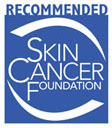
Reduce interior fading and cracking by blocking nearly 99% of the sun’s UV Rays.
Rejects up to 65% of the sun’s heat and shades the passengers.
Increases safety making glass more shatter resistant and holds fragments together in the event of glass breakage.
Reduces glare from the sun during the day by up to 80% and headlights at night.

Some UV rays can also pass through windows. Typical car, home, and office windows block most UVB rays but a smaller portion of UVA rays, so even if you don’t feel you’re getting burned your skin may still get some damage. Tinted windows help block more UVA rays, but this depends on the type of tinting.

“On commercial buildings, the return on investment was higher using window films than any other methods of retrofit, even replacing the air conditioning,” said Darrell Smith, executive director of the International Window Film Association, a trade association that represents all manufacturers, distributors and local dealers of window film products worldwide.

Window film is one of the fastest payback of any building product you can put in a house or building. Window film can reduce up to two thirds of the heat load of your air conditioner, thus cutting down on the run time, the amount of heat that has to be. More people are becoming involved in the green initiative. It is quickly becoming one of the largest global environmental movements ever. But what does being “green” mean?
In general terms, being green means displaying an ethical way of thinking in relation to the environment while considering the impact that is being made to the Earth’s Ecological Footprint. In the window film industry, “green” is achieved by sustainability through energy efficiency. The cost to heat and cool buildings, Along with the knowledge of how to design and apply technology in ways that reduce energy consumption, are the major drivers of the green initiative. This document outlines how window film contributes to that reduction of energy consumption and cost, making Solar Gard and Panorama film products a perfect fit to the green initiative.
Window films are designed to reduce the amount of solar heat transmission through window glass by increasing the solar reflection and solar absorption of the glass. Window films reflect a significant portion of the total solar energy from passing through existing windows.
The film also increases the absorption of that energy into the glass. A window with a film reflects and absorbs more solar energy than a window without a film.
In ¼” (3mm) annealed glass, 87% of the energy is transmitted, 5% is absorbed and 8% is reflected. Using Panorama Sterling 20 window film, 15% of the energy is transmitted, 37% is absorbed, and 49% energy is reflected. Clear Glass has a high transmission of the UV, Visible Light, and NIR Solar Energy Spectrum. This transmission stays linear from the visible wavelengths through the near infrared wavelengths (ref. graph below and note that the transmission curve remains flat). With solar film installed on the inside of a window, the proportions are changed dramatically, with reflected energy and absorption increasing. This corresponds to a reduction in solar heat transmitted (solar heat gain) inside the room.
The properties of the window film dramatically influence how and in what way transmission, reflection and absorption change. The movement or transfer of heat from a region of higher temperature to one of cooler temperature is called heat transfer. The transfer of heat always flows from hot to cold. No heat will transfer if there is no difference in temperature.
For example, when viewing the chart above, you will see that 1/8” (3mm) clear glass transmits approximately 87% of the solar energy which strikes the outside of the glass. When the glass is filmed with Panorama Hilite 70, the transmittance of solar energy in the visible light range is not reduced dramatically, -this permits a significant amount of light to pass through the glass.
However, the solar energy in the infrared region is greatly minimized to less than 5%, an extreme rejection of most of the radiant heat. Infrared solar energy accounts for approximately 53 percent of the sun’s energy. Infrared is found in the range from 780nm to 2500nm. Above this range is known as thermal radiation and is the range from 2500nm to 1mm. Heat radiating % Transmittance Wavelengths (nm) Clear Glass vs. Clear Glass filmed with Hilite 70.
A fire or your central heating system is thermal radiation. Panorama Hilite 70 will allow the room to retain most of the visible light coming through the window while rejecting the associated heat. This will result in a drastic load reduction on your AC unit during the warmer months.
Window Film Reduces Energy Consumption Only a few degrees in temperature reduction can have up to a 25% reduction in cooling costs, due to the laws of thermodynamics. It requires considerable amounts of energy to remove heat from a room through air conditioning. During peak summer times in the middle of the day, loads on air conditioning systems can be reduced enough to turn off entire units or to install a less costly system.
Single-glazed windows are only about one-third as energy-efficient as modern, low-E units. According to the Department of Energy, when it’s cold and windy outside, an old window loses energy about 10 times faster than an equal area of insulated wall. In many homes, heat transfer through and around older windows accounts for more than 25 percent of home heating and cooling bills.
Frequently asked questions about window tinting.
Premier Window Tinting St. Louis provides a lifetime warranty on all of our automotive window films & labor for as long as you own your car. Non transferrable. Excludes; tampering or window breakage.
Paint Protection Film is a thermoplastic urethane film applied to painted surfaces of a new or used car in order to protect the paint from stone chips, bug splatters, and minor abrasions. This film is also used on airplanes, RVs, cell phones, electronics, screens, motorcycles and many other areas. The racing industry has followed suit by applying the material to daily-driven automobiles. Paint Protection Film is OEM approved by virtually all car manufacturers.
YES!
Window film is legal however, the laws regarding the light blockage varies from state to state. Vehicles registered in Missouri may have the windows to the immediate right and left of the driver tinted to 35 percent, plus or minus three percent or more light transmittance. Windows behind the driver and the rear glass are not subject to tint limitations. The windshield is not to be tinted except that portion at the top.
Most cars are completed within 2 hours, depending on if your car has existing tint that needs to be removed before the new tint can be applied.
Customer Service is what we pride ourselves on here at Premier Window Tinting. It is our number one goal. One of our professional consultants will sit down with you to help you decide exactly what is best for your individual needs.
The Skin Cancer Foundation recommends window tint as part of a comprehensive sun protection program. This recommendation often comes as a surprise because most people think only of outdoor sun safety when they think of skin cancer prevention. While wearing sunscreen, covering up and staying in the shade are all keys to helping protect against the sun’s Ultraviolet Rays (UV) while outside, you should consider a more complete approach to prevention that includes protecting yourself and your family while indoors, especially on the road.
No. The material does contain an inhibitor to prevent the plastic from reacting to the sun’s UV rays, but this does not prevent the UV rays from passing through the material into your car’s paint.